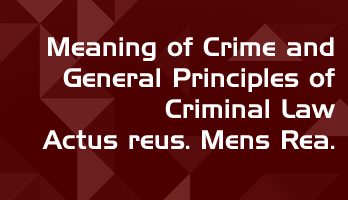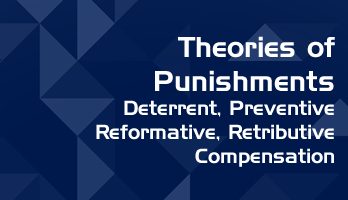Free Full Course Available on LawMint's YouTube Channel
How to Land Your Dream LLB Internship in a Top Law Firm
- Part 1 - Introduction
- Part 2 - Internship Planning
- Part 3 - Internship Research
- Part 4 - Building Your Profile
- Part 5 - The Email
- Part 6 - The Resume
- Part 7 - The Cover Letter
- Part 8 - The Interview
- Part 9 - Self Development
Practical and comprehensive course, with real examples and step-by-step analysis of the complete internship application process. Check out LawMint's YouTube channel now!
Who is a Hindu?
A Hindu is
(a) any person who is a Hindu, Jain, Sikh or Buddhist by religion (in short, they may be called ‘Hindus by religion’),
(b) any person who is born of Hindu parents, either when both the parents are Hindus or only one of the parents is Hindu (in short, they may be called ‘Hindus by birth’),
(c) any person who is not a Muslim, Christian, Parsi or Jew and who is not governed by any of the other law.
The study of sources of Hindu Law is the study of various phases of its development which gave it new drives and vigor, that enabled it to conform to the changing needs of the society.
It would be convenient to classify the various sources under the following heads:
Ancient Sources of Hindu Law
Under this head, following four sources are important because Hindu Law is considered to be divine law which are revealed by the God Himself. These revelations are contained in
Vedas or ‘Shruti’
Vedas are the primary texts of Hindu religion. The Vedas are a large body of religious texts originating in ancient India. Composed in Vedic Sanskrit, the texts constitute the oldest layer of Sanskrit literature and the oldest scriptures of Hinduism.
There are four Vedas: the Rigveda, the Yajurveda, the Samaveda and the Atharvaveda.
Each Veda has four subdivisions – the Samhitas (mantras and benedictions), the Aranyakas (text on rituals, ceremonies, sacrifices and symbolic-sacrifices), the Brahmanas (commentaries on rituals, ceremonies and sacrifices), and the Upanishads (texts discussing meditation, philosophy and spiritual knowledge).
Vedas are sruti (“what is heard”), distinguishing them from other religious texts, which are called smṛti (“what is remembered”). Hindus consider the Vedas to be of divine origin; as they are attributed to any specific author.
Smritis
Smritis provide supplementary exposition of rules contained in the Vedas.
Smritis, which mean “that which is remembered”, are a body of Hindu texts usually attributed to an author, traditionally written down, in contrast to the Vedas or Shruti, which are considered authorless.
The rules within the Smritis can be divided into three categories viz.
- Aachara – relating to behavior and personal morals. They include community norms are delineated and put into practice by people who have earned the respect of those within each individual group, such as a community leader or elder.
- Vyavahara – procedural and substantive rules pertaining to legal procedures. There are two basic meanings of vyavahara. The first is a general sense of practice, business, or everyday transactions. The other, specific sense is legal procedure, the processes of litigation including a trial.
- Prayaschitta – atonement, penance, expiation. It refers to voluntarily accepting one’s errors and misdeeds, confession, repentance, means of penance and expiation to undo or reduce the karmic consequences. It includes atonement for intentional and unintentional misdeeds.
Commentaries (Tika or Bhashya) and Digests (Nibandhs)
Smritis were not always clear and they did not cover all situations. Thus, the need was felt for further analysis, systematization and assimilation of law. This need was satisfied by Commentaries (Tika or Bhashya) and Digests (Nibandhs).
The Dayabhaga school of law is based on the commentaries of Jimutvahana (author of Dayabhaga which is the digest of all Codes) and the Mitakshara school is based on the commentaries written by Vijnaneswar on the Code of Yajnavalkya.
Customs
‘Custom’ is the oldest and most important source of Law. ‘Custom’ is an embodiment of those principles which have commended themselves to the natural conscience as principles of justice and public utility.
‘Customs’ originate in frequent repetition of the same act, and therefore, denotes rules of habitual conduct within a community. Uniformity of conduct in like circumstances is, thus, the hallmark of the ‘Custom’.
Essentials of a valid custom
(i) The custom must be ancient. The particular usage must have been practiced for a long time and accepted by common consent as a governing rule of a particular society.
(ii) The custom must be certain and should be free from any sort of ambiguity. It must also be free from technicalities.
(iii) The custom must be reasonable and not against any existing law. It must not be immoral or against any public policy and
(iv) The custom must have been continuously and uniformly followed for a long time.
Indian Courts recognize three types of customs viz.
(a) Local custom
These are customs recognized by Courts to have been prevalent in a particular region or locality.
(b) Class custom
These are customs which are acted upon by a particular class or community of Hindus.
(c) Family custom
These are customs which are binding upon the members of a particular family.
Modern Sources of Hindu Law
Among the modern sources of Hindu Law are :
Equity, Justice and Good Conscience
It owes its origin to the beginning of British administration. In the absence of any specific law or in the event of conflict, the principle of equity, justice and good conscience would be applied.
In other words, what would be most fair and equitable in the opinion of judges would be done in a particular case.
For example, a rule of English law founded on public policy that a murderer is to be disqualified from succeeding to the property of the victim found expression in the Hindu Succession Act, 1956.
Judicial Decisions or Precedents
These are considered to be the most fertile and practical source of Hindu law. However, in application judges should introduce those laws derived from recognized and authoritative source i.e. Smritis and Commentaries as interpreted in the judgments of the courts.
On several occasions, Judicial decisions – based on the interpretation of Constitutional rights; may override the customary Hindu law. Such as the rights of daughters during the partition of property.
Legislation
There are four major enactments on Hindu Law viz.
- The Hindu Marriage Act, 1955,
- The Hindu Succession Act, 1956,
- The Hindu Minority and Guardianship Act, 1956,
- The Hindu Adoption and Maintenance Act, 1956.
These legislative enactments which declare, abrogate or modify the ancient rules of Hindu law, form an additional source of Hindu law.
Questions
What do you understand by the term ‘Hindu’?
According to Hindu Law, the definition of a ‘Hindu’ is as under:
a. Any person who is Hindu, Jain, Sikh or Buddhist by religion, i.e., Hindu by Religion
b. Any person who is born of Hindu Parents (viz. when both the parents or one of the parents is Hindu, Jain, Sikh or Buddhist by religion) i.e. Hindus by birth, and
c. Any person who is not a Muslim, Christian, Parsi or Jew and who is not governed by any of other law.
Free Full Course Available on LawMint's YouTube Channel
How to Land Your Dream LLB Internship in a Top Law Firm
- Part 1 - Introduction
- Part 2 - Internship Planning
- Part 3 - Internship Research
- Part 4 - Building Your Profile
- Part 5 - The Email
- Part 6 - The Resume
- Part 7 - The Cover Letter
- Part 8 - The Interview
- Part 9 - Self Development
Practical and comprehensive course, with real examples and step-by-step analysis of the complete internship application process. Check out LawMint's YouTube channel now!
Acknowledgement : This article is adapted from Swayam – NIOS course material












